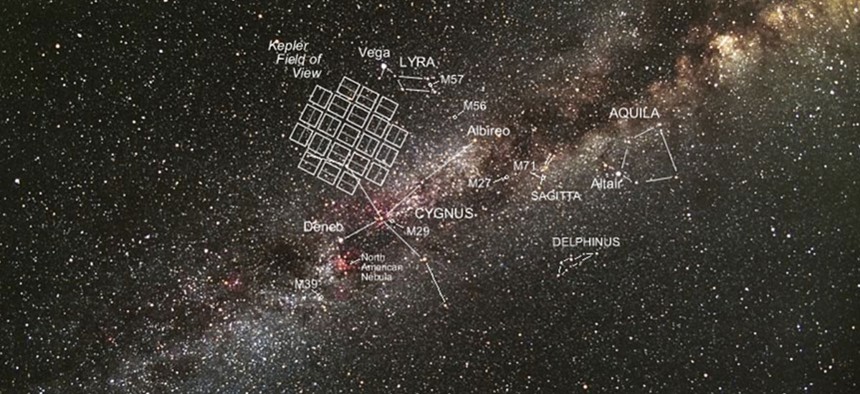
(Carter Roberts / Eastbay Astronomical Society / NASA
NASA Has Found Another 20 Promising Planets For Humans to Colonize
One of these new planets is ripe for an "Interstellar"-style space mission.
An international team of scientists has found 20 more exoplanets that might sustain human life. If confirmed, this would increase the number of known extrasolar planets thought to be capable of sustaining life, bringing the total number of known, habitable near-Earth-sized exoplanets to around 50.
The space telescope, Kepler, was launched in 2009 with the specific mission to find extrasolar planets. And scientists have used its data to confirm thousands of them. Kepler broke in 2013, but the area of space it recorded over the four years it was operational contained over 150,000 stars, so there’s still a lot of data to go through.
Scientists winnowed down to a list of 4,034 exoplanets with durations of orbit of between around 6 hours and 632 days. From that list, the team singled out 20 candidates most likely to have the characteristics necessary to sustain life and published their findings earlier this month on the arXiv preprint server .
One of the most interesting of these new planets for a potential Interstellar -style space mission, according Jeff Coughlin, a Kepler team lead and co-author of the paper, is KOI-7923.01. “If you had to choose one to send a spacecraft to, it’s not a bad option,” Coughlin told the New Scientist . The planet is 97% the size of Earth, has an orbit of 395 of our days, and is likely covered by a cold tundra—though not so cold that it can’t support life.
However, Coughlin did stress that more observations are necessary. The hobbled Kepler and the longer orbits of this set of planets means the telescope was only able to observe the transits (when a planetary body passes in front of its star) once or twice.
And though he told the New Scientist he and his team are 70-80% certain of the credibility of these candidates, the necessary next step is to point ground-based instruments or the Hubble telescope at them for final confirmation.






